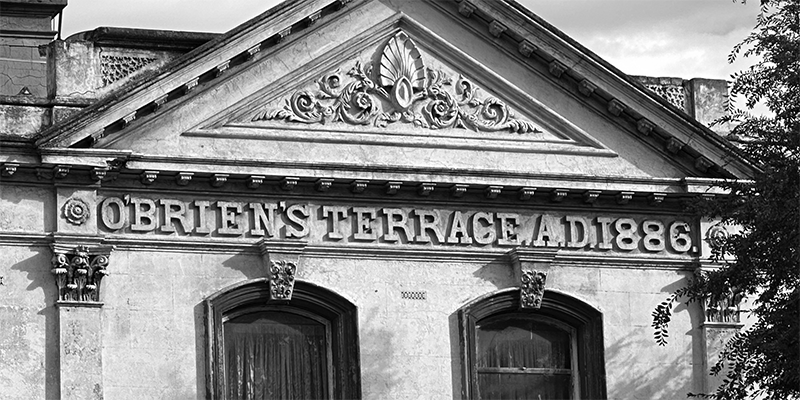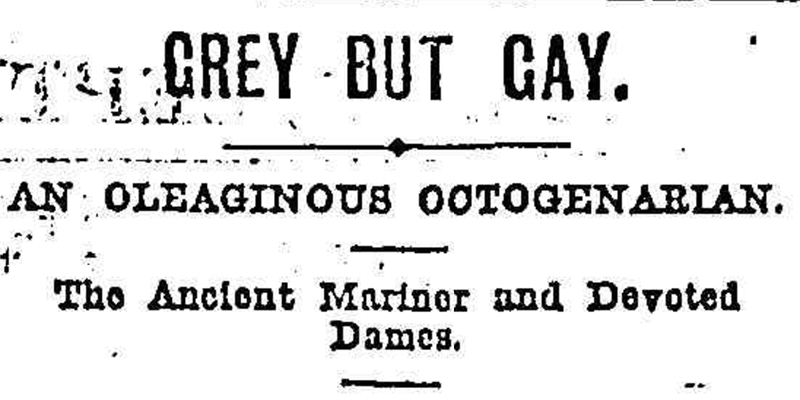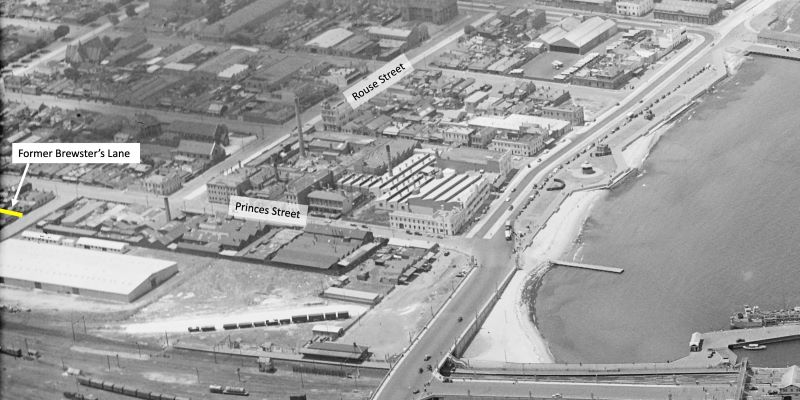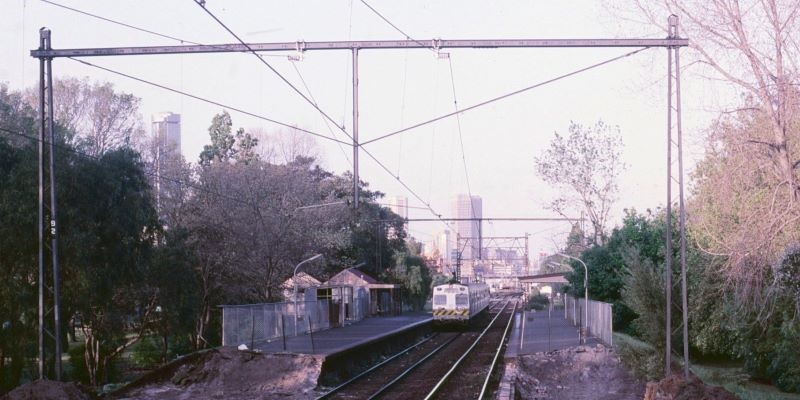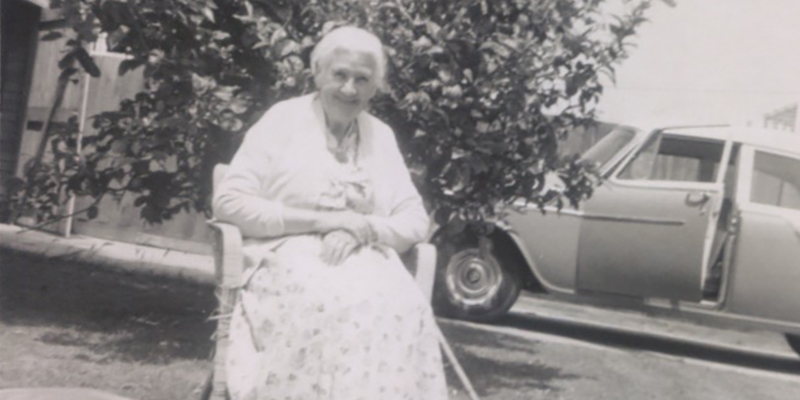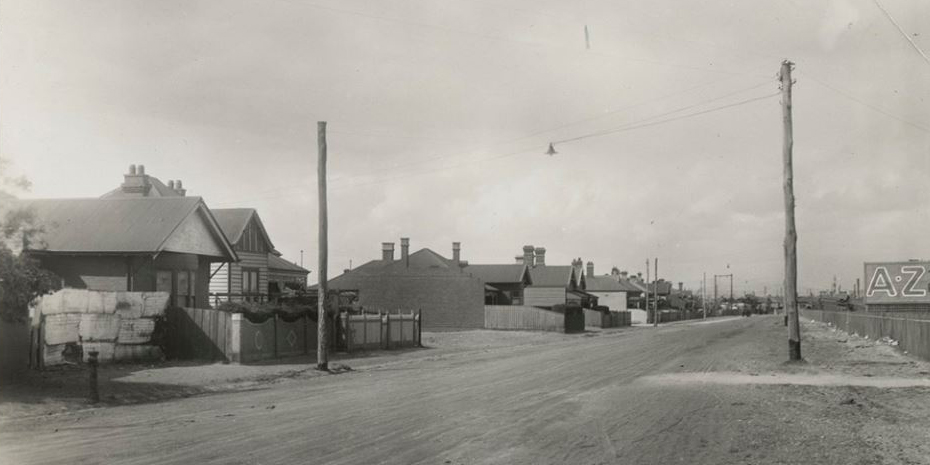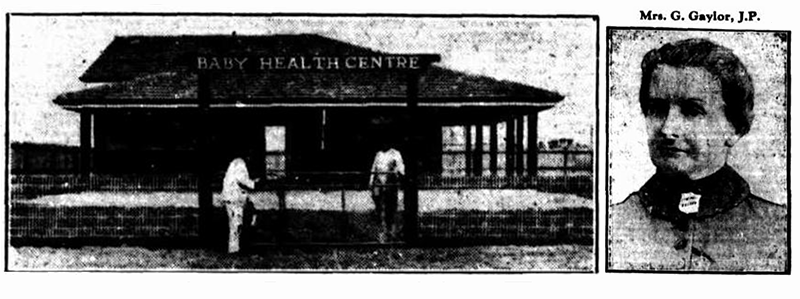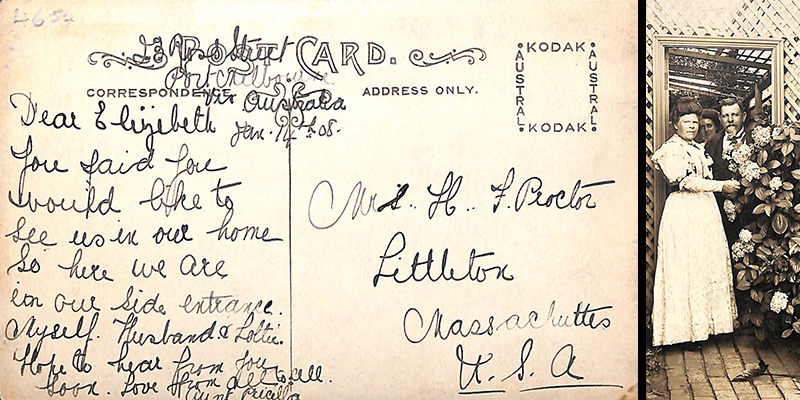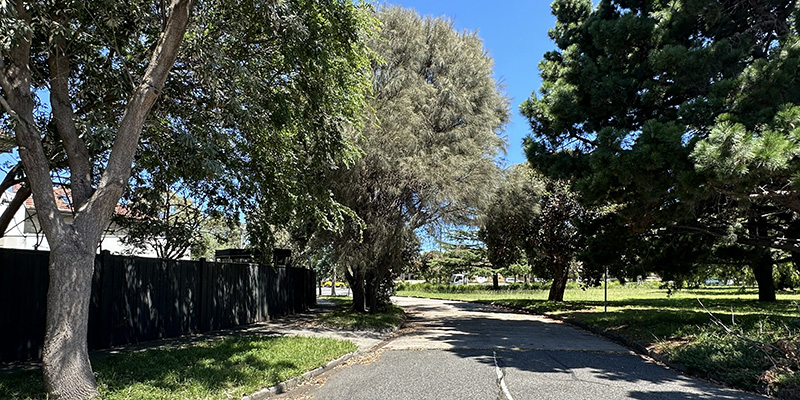by David Thompson
O'Brien's Terrace, Bay Street, 2024. Photograph by David Thompson.
O’Brien’s Terrace, an impressive row of five double-storey shops and dwellings, stands on the west side of Bay Street. The date inscribed on the façade of the building under the pediment indicates it was built in 1886. But who was O’Brien?
The Port Melbourne Conservation Study from July 1979…
